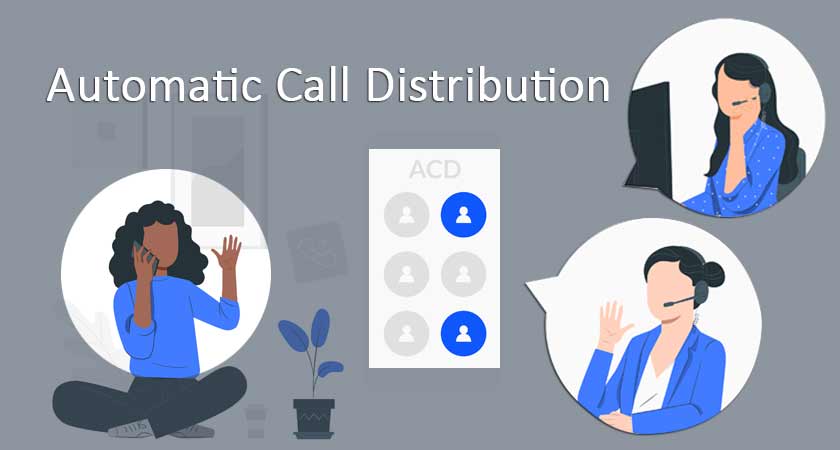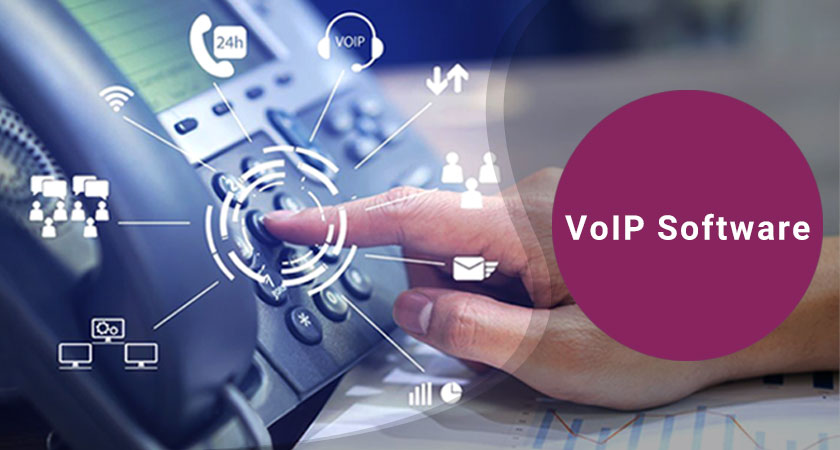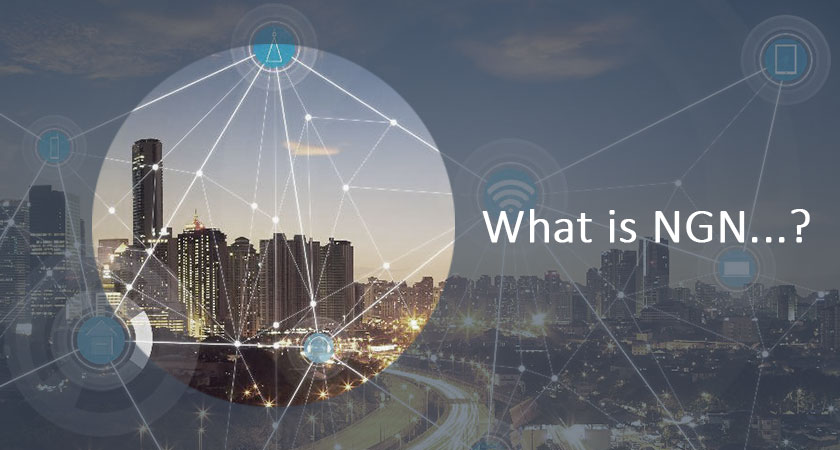What is Automatic Call Distribution & How it Lowers Costs
Customers always want their problems resolved as quickly as possible and have no desire to wait too long. Automatic Call Distribution technology can help a lot in this regard.
Automatic Call Distribution (ACD) is a business phone system software that receives incoming calls and routes them to a specific agent or department of the company.
Calls can be distributed based on caller ID, business hours, support level, and IVR options. As a result, incoming calls will be connected to the relevant agent or department without dialing a separate phone number.
For example, a call distribution system can connect an organization's callers to the sales department. When a VIP customer calls the support phone number, it can be routed to the VIP support queue for the lowest possible delay.
Why Should Calls be Automatically Distributed?
ACD is responsible for managing the high volume of calls and increasing the efficiency of call centers. This will be very important in increasing customer satisfaction.
Almost 90% of customers who connect to a call center expect their problem to be solved in just one call. Recent researches by SQM Group shows that the lack of effective and efficient interaction between the organization and the customer causes a 15% decrease in customer satisfaction.
In the image below, you can also see that customer satisfaction decreases after making several calls.

First Call Resolution (FCR) is one of the essential criteria of a call center. Therefore, you should make sure that you measure the FCR well so that you can optimize the following things:
- Lower operating costs
- Reducing the loss of customers
- More employee participation
- Improve customer experiences
- Real-time analysis and management dashboard
- Better customer referrals
Before we examine how ACD works, it is better to first familiarize ourselves with two critical factors that play a significant role in reducing call quality:
If call center agents perform poorly, they often fail to solve customer problems even if there is a simple solution. They may also lack the experience or skills to handle customer calls. Therefore, it is better to monitor and control calls in real time.
When customers are connected to the wrong person to solve their problem, it affects them negatively. On the other hand, agents who can provide better services to customers will play a significant role in the overall customer experience.
It would help if you considered all the different ways to route calls. Automatic call distribution features allow you to handle more calls better.

How Does ACD Work?
An ACD routes the incoming call by taking into account the details of the incoming call. ACD can evaluate the dialed number, the phone number of the call recipient, the availability of the call center agent, and other data sources.
In the following, we will mention the methods that determine what calls an agent should receive. ACD can also fully monitor the availability of agents. Other criteria include how the agents speak, their skills, and working hours.
Step 1: Determine the Purpose of the Call
Determining the nature of the incoming call is one of the requirements. An IVR can provide options for callers to specify why they are calling. The Dialed Number Identification Service (DNIS) can also determine the purpose of the call, like the reverse caller ID for call centers.
Step 2: Manage the Call Queue
At this stage, you should put the phone calls in the correct queue and wait for them to reach the agents. ACD automatically routes waiting for calls. The automatic call distribution system determines the order of call queues based on factors such as the following:
- Agent status
- Call recipient waiting time
- Call type
- Customer information
Step 3: Connect the Calls
The final stage of the call routing process by ACD is call handling and termination. Since many people have no desire to wait to connect to an agent, the phone system should also provide a callback feature so that the customer is not delayed and can be contacted at another time. ACD is also used to document all these steps and analyze call logs.
Although the configuration of the ACD algorithm seems complicated, the installation and operation of ACD are simple. You can customize the call routing strategy based on your business needs; for example, this strategy can be found on available agents. This enterprise PBX feature is not only for incoming calls but also for internal transfers.
This form of automation depends on your business needs and the capabilities of your contact center software provider. To know the best routing strategy, you need to know which metrics are essential to your business.
Various ACD Routing Options

Round-Robin
Round-robin call routing is the easiest way to distribute calls. Incoming calls are distributed among agents in a fixed order.
For example: if five agents are available in your organization, the first incoming call goes to the first agent, the next call is sent to the second agent, and so on until the fifth agent. If the fifth agent is busy, this process will start again, and the first agent will receive the next call.

Fixed
Fixed call distribution requires a specific order. That is, calls are connected to particular agents in the order you specify.
For example: if there are three agents in the call center department, routing is done hierarchically. If agents one and two are unavailable, calls are routed to the third agent.

Agent Talk Time
Based on most extended availability, call distribution sends incoming calls to agents that have been available longer than others. After accepting the call, other agents will return to the queue to send a call to each of them based on the longest available time. This makes the volume of calls more equitable between employees, especially for those with lower average handling times.
For example: imagine there are five agents in your team. The first agent answered a call 7 minutes ago, and the last call answered by the second agent was 16 minutes ago. As a result, the double agent has been available for longer, and the next call will be sent to him.

Simultaneous
Handling calls simultaneously makes the phones of all agents ring at the same time. When speed is essential for your business, routing calls this way is the best option. By doing this, the possibility of transferring calls to voicemail is minimized.
For example: If there are three people in your call center team, when a new call comes in, all the phones will ring, and anyone can answer.

Weighted
A weighted call routing scheme allows administrators to route some calls to specific agents. Directing calls this way can be great when you hire new employees or want the best agents to answer calls.
For example, you currently have 100 incoming calls, and three agents are available. The first agent has 40% of the weighted call distribution, the second agent has 25%, and the third agent has 35%. Therefore, based on this policy, 40 calls are sent to the first agent, 25 calls to the second agent, and 35 calls to the third agent.

How Does ACD Improve the Caller Experience?
Today, speed is essential for customers, and according to reports, two-thirds of customers wait for a response from agents for only two minutes. When you optimize your inbound call routing, it will significantly impact the customer experience and result in:
- Shorter waiting time
- Fewer callbacks
- Improved resolution rate
- Secure information tracking in CRM
- Verbal communication in social networks
ACD enables customers to communicate with the right and specific agent. So, it increases work efficiency, and deep CRM integration reduces the need for people to make too many calls.
According to Charlie Dirksen, CEO of Nowatch, in addition to the benefits above, ACD increases customer satisfaction differently:
By implementing a suitable ACD system, we can turn customer support agents into professional specialists. This issue will immediately impact employee satisfaction because it will enable agents to become experienced in certain subjects and turn their mundane and predictable work into a challenging and attractive one. As a result, employees will be happy, and customers will be satisfied.
What is the Difference between IVR and ACD?
An IVR solution gives callers various options, from their dialer or speech recognition.
For example, an IVR may give you this message after making a call: "Dial 1 to contact customer support."
The response to these prompts will determine what the caller's goal is and what kind of assistance they need.
Advanced IVRs can also reduce high call volume with self-service functionality.
In contrast, an automated call distribution system assigns calls internally within a team or group. An IVR system often pairs well with an ACD system to route calls efficiently.
In the table below, the differences between these two systems are defined.
| ACD | IVR | Function |
| Employee data such as department, skillset, and available agents | Customer data such as location, local time, and caller ID | Data source |
| No self-service options are available | Yes, self-service options reduce call volumes | Self-service |
| Directing incoming calls to the most qualified, most suitable agent on the team | Obtaining caller intent and connecting them to the right queue | Typical use |
In short, IVR systems collect customer data and then deliver it to the ACD. ACD then uses real-time data (based on agent skill sets or availability) to distribute calls.

How to Get an Automatic Call Distribution System?
If you have a VoIP phone system, some built-in ACD functionality is likely available, and advanced automatic call distribution is included in select call center solutions.
Organizations using legacy PBXs must look for hardware, software, and expertise to implement this functionality. These organizations have to pay a high price for this issue.
Another option is to choose a ready-to-use VoIP call center solution to handle all calls. Agents won't need landlines, and you can be up and running within days.
Finally, you can keep your agents satisfied by using an IVR and a suitable ACD and increase customer satisfaction.



